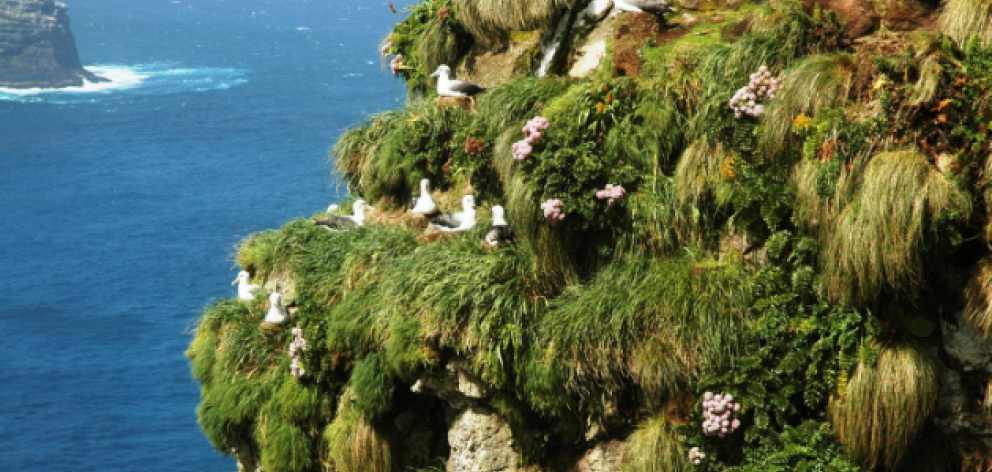
Lying some 465km south of Bluff, within the wild and windswept Southern Ocean, the 46,000ha Auckland Island is the last in the group where pigs, cats and rodents still roam.
It’s home to some of the planet’s most stunning and unique biodiversity – but also pigs and cats that have devastated floral communities and driven the local extinction of most seabird species that once bred there.
Only about a dozen – including the majestic Southern royal albatross - remain.
Mice, too, have hit the island’s invertebrate populations hard, while competing with native birds for food.
Since a five-year project succeeded in wiping out nearby Antipodes Island’s estimated 200,000 mice in 2018, the Department of Conservation (DoC) has been assessing how Auckland Island’s resident pests might be purged.
It’s something explored in a special issue of the New Zealand Journal of Ecology this week, which brings together nearly four decades of insights gleaned from successful operations run elsewhere in the remote archipelago.
Its editor, Professor James Russell, expected an Auckland Island programme, from mobilisation to mop-up, would take the better part of a decade.
“You’d need to take out the pigs with hunting, the mice with poison, then you’d turn to the cats, with a couple of years of follow-up and then de-mobilisation.”
DoC’s national eradication manager Stephen Horn, who led the Auckland Island research, said this week’s paper wrapped up a four-year investigation.
“An in-depth feasibility study was needed as this would be the largest and most complex multi-species island eradication attempted to date,” he said.
“The team undertook large-scale field trials on the remote island to test adapted methods and emerging technologies, such as thermal cameras to detect pigs, camera traps to detect cats, prototype cat baits, and a reduced bait sowing rate for mice.

Russell, an island conservation expert at the University of Auckland, said that, compared with the work on the 2100ha Antipodes group, the scale of an Auckland Island project would be “massive”.
Not only would it require overcoming serious logistical hurdles – namely transporting hundreds of tonnes of bait and teams to an island lacking key infrastructure – but also carefully balancing the eradication programme between its targeted species.
“There’d be a lot of complexity to it.”
While the operation had been costed at $79m, Russell didn’t consider that much to make 46,000ha of land pest-free forever.
“We’ve also got obligations – it’s the last island in the Subantartic World Heritage Area to still have pests – so it’s a bit naughty of us to not be trying to get them off there.”
He expected a pest-free Auckland Island would be gradually recolonised by millions of seabirds – surveys already show populations of snipe and pitpit rebounding at Antipodes Island - and lay a useful blueprint for programmes on other islands.
Clearing all of our uninhabited offshore islands – DoC manages about 220 larger than 5ha - remained one of several unfulfilled short-term goals of New Zealand’s wider Predator Free 2050 mission.
A report last year found that just one of those – increasing the area in which predators were suppressed by one million hectares – had been achieved, with others still progressing.
“The top islands remaining for us are Auckland Island, Rakiura/Stewart Island, Aotea/Great Barrier Island and Chatham Island – and if we could do it on them, we’d really be nailing it.”












